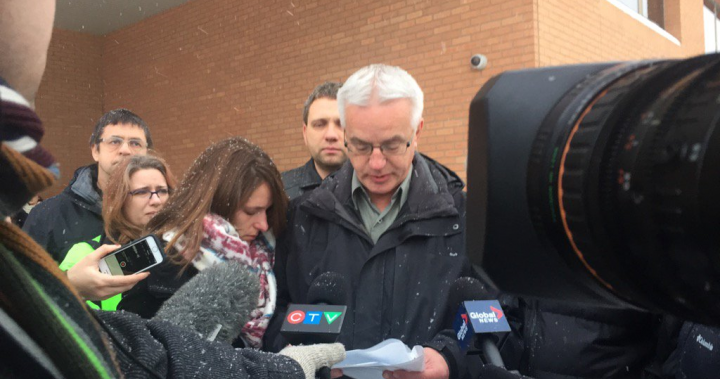Auto Dealerships Push Back On Mandatory EV Sales

Table of Contents
Financial Concerns and Infrastructure Readiness
The transition to selling and servicing electric vehicles presents substantial financial hurdles for auto dealerships. The high initial investment costs and uncertainties surrounding consumer demand in certain markets are key concerns fueling the pushback against mandatory EV sales.
High Initial Investment Costs
Adapting to the EV market requires significant upfront investment for dealerships. This includes:
- Investing in new charging infrastructure: Installing Level 2 and potentially Level 3 chargers requires substantial capital expenditure, especially for larger dealerships handling a diverse range of vehicles. The cost of installation, maintenance, and electricity consumption adds to the overall financial burden.
- Training staff on EV technology and maintenance: EVs have unique technological components and require specialized training for technicians. Dealerships must invest in comprehensive training programs to ensure their staff is equipped to handle EV repairs and maintenance effectively. This includes training on high-voltage systems, battery management, and specialized diagnostic tools.
- Modifying service departments to handle EV repairs: Service bays may require modifications to accommodate the specific needs of EV servicing, including safety precautions for handling high-voltage systems. This may involve installing specialized equipment and redesigning workspaces.
- Managing EV inventory: EVs, particularly those with larger battery packs, may require more storage space than traditional internal combustion engine (ICE) vehicles. This could necessitate expanding existing facilities or investing in additional warehouse space.
Lack of Consumer Demand in Certain Markets
The readiness for widespread EV adoption is uneven across different regions. Several factors contribute to a lack of consumer demand in some areas, making aggressive EV mandates challenging for dealerships in these markets:
- Limited public charging stations in rural areas: The lack of adequate charging infrastructure outside of urban centers remains a major barrier for potential EV buyers in many regions. Range anxiety is a significant concern for consumers who lack confidence in the availability of charging points along their travel routes.
- Consumer hesitancy due to range anxiety and charging time: Concerns about limited driving range and longer charging times compared to filling a gas tank continue to deter some consumers from adopting EVs. Addressing these concerns requires improvements in battery technology, charging infrastructure, and public awareness campaigns.
- Higher initial purchase price of EVs compared to ICE vehicles: The higher initial cost of EVs, despite decreasing over time, remains a major barrier to entry for many potential buyers, particularly in economically disadvantaged communities. Government incentives and financing options are crucial in overcoming this price disparity.
Challenges with EV Technology and Maintenance
Beyond the financial considerations, auto dealerships face significant challenges related to the specific technological aspects of EVs and their maintenance.
Specialized Training and Expertise
Servicing EVs demands a different skillset and equipment compared to working on ICE vehicles. Dealerships face a considerable investment in upskilling their workforce and acquiring specialized tools.
- Battery repair and replacement necessitate highly skilled technicians: Battery systems are complex and expensive to repair or replace, requiring technicians with specialized knowledge and training.
- Diagnostic tools for EVs differ substantially from those for ICE vehicles: Dealerships need to invest in advanced diagnostic equipment specifically designed for EVs to accurately identify and troubleshoot issues.
- Specialized safety training is crucial due to high voltage systems in EVs: Working with high-voltage systems in EVs presents significant safety risks, necessitating specialized training to prevent accidents and injuries.
Supply Chain Issues and Parts Availability
The EV supply chain is still under development, leading to potential delays in repairs and increased costs for parts. This is a significant concern for dealerships aiming to provide timely and efficient service.
- Longer wait times for specific EV parts compared to ICE vehicle parts: Obtaining certain EV parts, especially specialized components like batteries and inverters, can take considerably longer than getting parts for ICE vehicles.
- Uncertainty regarding the long-term availability and cost of EV batteries: The long-term viability and cost of EV batteries remain uncertain, which adds to the financial risk for dealerships and impacts their ability to provide reliable service.
- Potential for supply chain disruptions impacting repair times: Global supply chain disruptions can exacerbate the challenges of obtaining EV parts, potentially leading to extended repair times and customer dissatisfaction.
Government Support and Regulatory Hurdles
The automotive industry's transition to EVs also highlights the crucial role of government support and the need for clear, consistent regulations.
Insufficient Government Incentives
Dealerships argue that current government incentives for EV adoption are insufficient to offset the considerable costs of transitioning to an EV-centric business model. They advocate for more substantial support to facilitate a smoother transition.
- Need for increased government funding for charging infrastructure development: Significant investment in public charging infrastructure is necessary to address range anxiety and encourage wider EV adoption.
- Tax credits and subsidies should be more accessible and attractive to consumers: Government incentives should be designed to make EVs more affordable and attractive to a broader range of consumers.
- Addressing concerns about the long-term viability of EV subsidies: Dealerships need assurances about the long-term commitment to government incentives to avoid uncertainty in their investment plans.
Complexity of Regulations and Compliance
Navigating the complex web of regulations surrounding EV sales and maintenance adds another layer of challenge for dealerships. Simplified, consistent regulations are crucial.
- Varying regulations across different states and regions create complexities: Inconsistent regulations across different jurisdictions create administrative burdens for dealerships operating in multiple states or regions.
- Need for clearer and more consistent regulations to simplify compliance: Clearer, streamlined regulations would reduce administrative costs and simplify compliance for dealerships.
- Increased paperwork and reporting requirements increase operational costs: The increased administrative burden associated with complying with new regulations increases operational costs for dealerships.
Conclusion
The pushback against mandatory EV sales from auto dealerships stems from valid financial and logistical concerns. The rapid transition to EVs requires substantial investment, specialized training, and robust infrastructure. While the shift towards electric vehicles is environmentally crucial, a more balanced approach is needed—one that addresses the challenges faced by dealerships and provides sufficient government support and incentives. Ignoring these concerns could hinder the successful implementation of mandatory EV sales targets. A collaborative approach, addressing the concerns highlighted above, is vital for a smooth and equitable transition to a future powered by electric vehicles. Let's work together to create a sustainable automotive industry by constructively addressing the challenges of mandatory EV sales.

Featured Posts
-
 Pacers Vs Cavs Season Series Predictions And Match Analysis
Apr 30, 2025
Pacers Vs Cavs Season Series Predictions And Match Analysis
Apr 30, 2025 -
 Beyonce I Kayti Emfanisi Me Tzin Sortsaki Se Diafimisi
Apr 30, 2025
Beyonce I Kayti Emfanisi Me Tzin Sortsaki Se Diafimisi
Apr 30, 2025 -
 After School Camp Devastated Car Crash Claims Four Lives Children Included
Apr 30, 2025
After School Camp Devastated Car Crash Claims Four Lives Children Included
Apr 30, 2025 -
 Chto Proizoshlo Na Superboule 2025 Dzhey Zi Teylor Svift Serena Uilyams
Apr 30, 2025
Chto Proizoshlo Na Superboule 2025 Dzhey Zi Teylor Svift Serena Uilyams
Apr 30, 2025 -
 Witt Jr And Garcia Lead Royals To Victory Over Guardians
Apr 30, 2025
Witt Jr And Garcia Lead Royals To Victory Over Guardians
Apr 30, 2025
Latest Posts
-
 Time 100 Noa Argamanis Impact After Hostage Rescue
Apr 30, 2025
Time 100 Noa Argamanis Impact After Hostage Rescue
Apr 30, 2025 -
 Noa Argamani Recognized By Time Magazines 100 Most Influential
Apr 30, 2025
Noa Argamani Recognized By Time Magazines 100 Most Influential
Apr 30, 2025 -
 Rescued Hostage Noa Argamani Honored By Time Magazine
Apr 30, 2025
Rescued Hostage Noa Argamani Honored By Time Magazine
Apr 30, 2025 -
 Louisvilles 2025 Crisis A Devastating Combination Of Snow Tornadoes And Floods
Apr 30, 2025
Louisvilles 2025 Crisis A Devastating Combination Of Snow Tornadoes And Floods
Apr 30, 2025 -
 Noa Argamani Time Magazines 100 Most Influential People
Apr 30, 2025
Noa Argamani Time Magazines 100 Most Influential People
Apr 30, 2025
